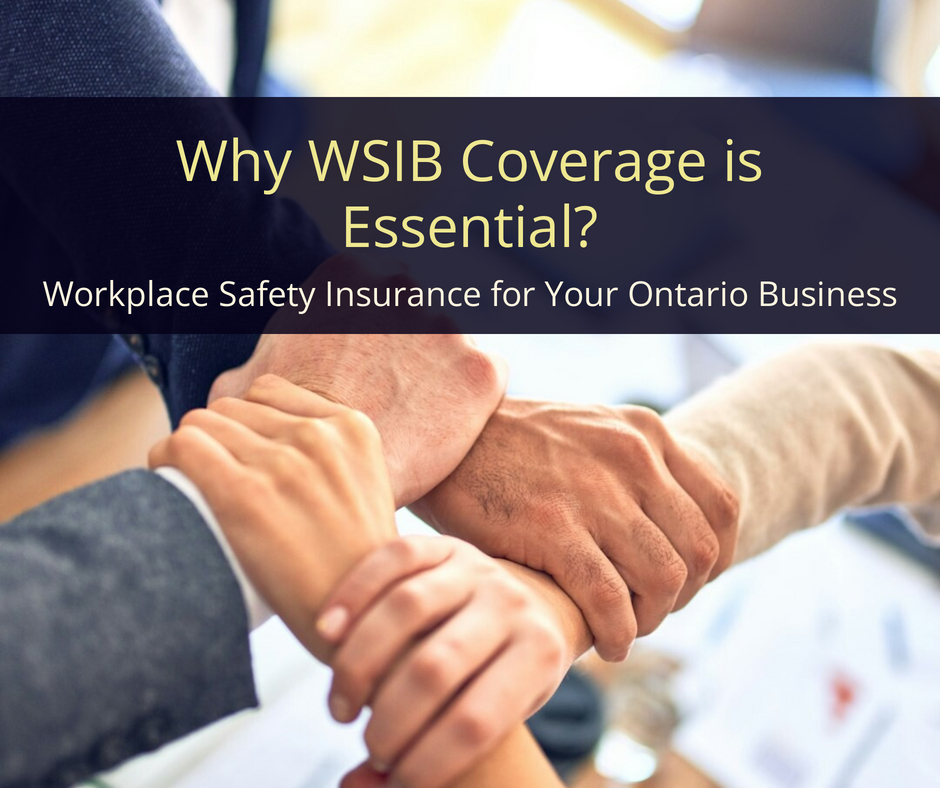When running a business, ensuring workplace safety is paramount. One of the key elements in achieving this is understanding and securing Workers’ Safety and Insurance Board (WSIB) coverage. G.L.H Accounting is here to help you understand WSIB coverage for your business. This blog post covers employer responsibility, worker health, and how to figure out what coverage you need.
What is WSIB Coverage?
Ontario’s Workplace Safety and Insurance Board (WSIB) provides a safety net for both employees and employers in case of accidents by offering coverage for medical bills and lost wages for injured workers as well as rehabilitation services when needed. The insurance also shields employers from liability lawsuits filed by employees injured while, at work.
Why does having WSIB coverage matter?
It’s essential to have WSIB coverage because it guarantees that employees get the help and compensation they need in case of work-related injuries.
It also helps shield employers from legal action and financial strains that may result from workplace accidents fostering a secure work setting and building trust between employers and employees.
Analyzing Your Business for WSIB Coverage
In order to assess whether your company requires WSIB coverage or not you must consider various aspects pertaining to your business activities employees and compliance, with industry standards.
Assessing Employer Liability
Employer liability refers to the legal responsibilities that employers have toward their employees. This includes providing a safe working environment, proper training, and adequate safety measures. Failing to meet these obligations can result in severe consequences, including fines and lawsuits.
- Workplace Safety Protocols: Evaluate your current workplace safety protocols. Ensure that safety measures align with industry standards. Regularly update and review safety practices.
- Education and Training: Offer extensive education to staff regarding safety in the workplace.
- Conduct regular safety drills and refresher courses.
- Safety Equipment: Ensure that employees have access to necessary safety equipment. Regularly inspect and maintain safety gear and machinery.
Understanding Occupational Health
Occupational health focuses on the physical and mental well-being of employees in the workplace. Ensuring good occupational health practices can reduce the likelihood of workplace injuries and illnesses.
- Health Risk Assessments: Conduct regular health risk assessments. Identify potential hazards and implement measures to mitigate them.
- Employee Health Programs: Offer health programs that promote physical and mental well-being. Provide resources for stress management and mental health support.
- Ergonomics: Ensure that workstations and equipment are ergonomically designed. Regularly assess and adjust ergonomic practices to prevent injuries.
Steps to Secure WSIB Coverage
Once you have analyzed your business for WSIB coverage needs, follow these steps to secure the necessary insurance.
Determine Coverage Requirements
Different industries have varying WSIB coverage requirements. Research the specific requirements for your industry to ensure compliance.
- Industry Regulations: Review industry-specific regulations and WSIB guidelines. Understand the minimum coverage requirements.
- Business Size and Type: Consider the size and type of your business. Larger businesses may have more extensive coverage needs.
Apply for WSIB Coverage
After determining your coverage requirements, the next step is to apply for WSIB coverage.
- Gather Necessary Information: Collect all required documentation, including business details and employee information. Ensure that all information is accurate and up-to-date.
- Submit Application: Complete the WSIB coverage application form. Submit the application along with the necessary documentation.
- Review and Approval: The WSIB will review your application. Once approved, you will receive your WSIB coverage certificate.
Maintain Compliance
Securing WSIB coverage is not a one-time task. It requires ongoing efforts to maintain compliance and ensure workplace safety.
- Regular Audits: Conduct regular audits of your workplace safety practices. Address any identified issues promptly.
- Update Coverage: Update your WSIB coverage as your business grows or changes. Ensure that your coverage always meets regulatory requirements.
- Employee Communication: Keep employees informed about their WSIB coverage. Provide regular updates and training on workplace safety practices.
Benefits of WSIB Coverage
Securing WSIB coverage offers numerous benefits for both employers and employees.
For Employers
- Legal Protection: Protects against lawsuits and liability claims. Ensures compliance with legal obligations.
- Financial Security: Reduces financial burden in case of workplace injuries. Provides peace of mind knowing that employees are covered.
- Enhanced Reputation: Demonstrates a commitment to employee safety. Builds trust and improves employer-employee relationships.
For Employees
- Medical Coverage: Covers medical expenses for workplace injuries. Provides access to necessary treatments and rehabilitation.
- Wage-Loss Benefits: Compensates for lost wages during recovery. Ensures financial stability for injured workers.
- Support Services: Offers support services for physical and mental well-being. Helps employees return to work safely and efficiently.
Conclusion
Analyzing your business for WSIB coverage is a crucial step in ensuring workplace safety and protecting both employers and employees. By understanding employer liability, promoting occupational health, and securing the necessary coverage, you can create a safer working environment and foster a positive workplace culture. Take the necessary steps today to secure WSIB coverage and safeguard your business and workforce for the future.
Book your consultation with G.L.H. Accounting for guidance and personalized expert advice tailored to meet your business needs. Ensure that your business not only meets but exceeds WSIB standards with our assistance. Let us help you turn compliance into an opportunity to enhance safety measures and financial stability.
About Author
Shanel John is a dedicated Certified Public Accountant (CPA) at G.L.H. Accounting, specializing in Income Tax since January 2012. Based in Brampton, Ontario, Canada, Shanel offers expertise in tax preparation, financial accounting, and advisory services. A certified QBO Pro Advisor, Shanel’s decade-long experience and knowledge make her a trusted figure in the accounting field.

